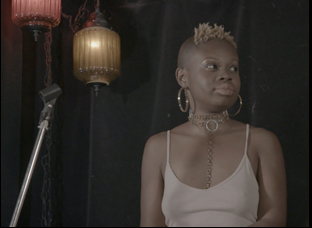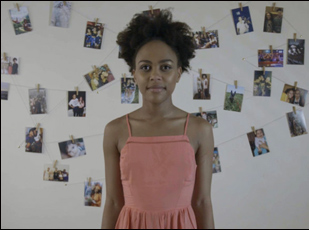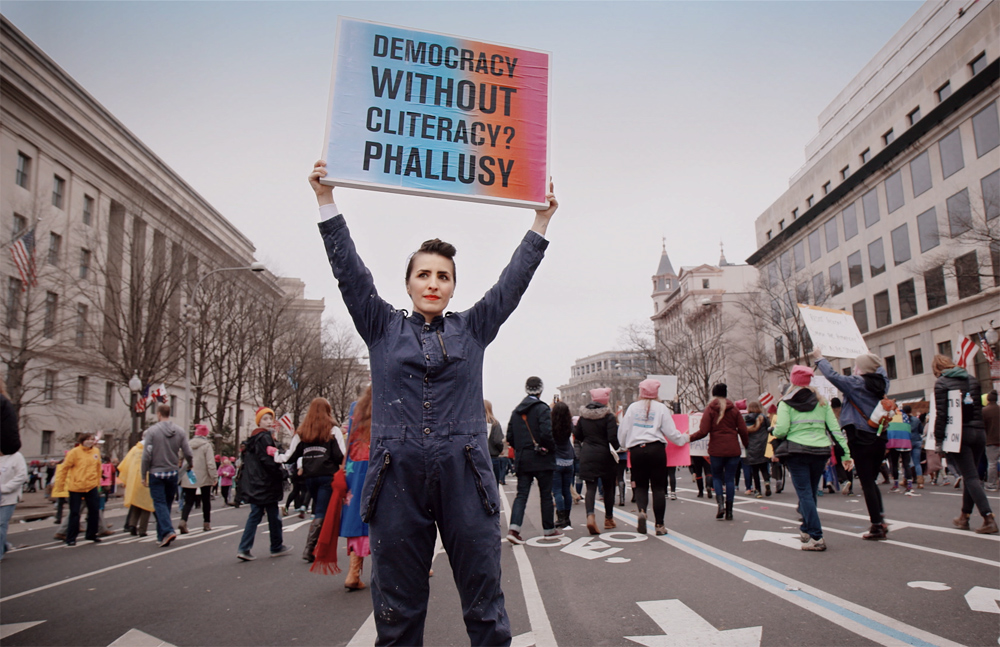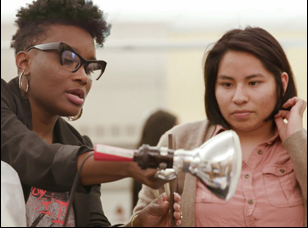At the start of making “The Dilemma of Desire,” Maria Finitzo and her producers has convened a meeting of the minds in Chicago, bringing together dozens of women from all walks of life to openly talk about what had long been a societal taboo – their clitoris. The filmmaker had already been filming with Sophia Wallace, a multidisciplinary artist who had been trailblazing in fostering this conversation at large with her project “Cliteracy,” providing basic knowledge on female genitalia where sex ed had long failed, but when it took until 1998 for scientists even to be able to present a full structure of the clit since no proper study had been done before, Finitzo had to wonder whether the subject was still so obscure even amongst women that it might not be meaningful to address with a full feature film.
“At one point, one of the women in the room said, ‘I have hungered for this conversation. We never talk about this,’” recalls Finitzo. “And it was quite wonderful because it validated my hunch that this was a film that would resonate with a wide audience.”
In “The Dilemma of Desire,” Finitzo channels the energy of that conversation into a brisk, entertaining and edifying cultural history of the clitoris, making the convincing case that its absence in the public discourse, woefully underrepresented, if at all, in scientific research studies in relation to its male counterpart and largely made to feel as if it’s too private to talk about, has stymied the progress towards achieving full equality for women. Although the joke has always been that men can’t find the clitoris, the punchline has been particularly cruel to women as Finitzo illustrates when in the opening moments of her film, Dr. Stacey Dutton, an assistant professor of biology at Agnes Scott College, has trouble locating it as she flips through the pages of Gray’s Anatomy, lamenting “It’s almost like they wiped womanhood out of the text.”
Finitzo puts a face to how damaging this slight has been to society as a whole, following the work of Dr. Dutton; Dr. Lisa Diamond, a professor of psychology and gender studies at the University of Utah, Ti Chang, the co-founder of the female-driven sex toy manufacturer Crave, and Wallace, whose efforts can seem provocative merely when presenting basic facts, but widens her scope to include a collection of young women for whom more knowledge about sex at an early age would’ve changed their lives radically. “The Dilemma of Desire” introduces audiences to Coriama, Jasmine, Becca, Unmia and Sunny, all of whom can be seen speaking confidently to the camera now about their experiences, but describe how undermined they’ve been throughout the years by being misinformed or outright misled about how their bodies work and the ripple effect that uncertainty has had on attaining personal and career goals.
“The Dilemma of Desire” can be seen bringing light to how knowledge is power in any number of ways, with effervescent subjects competing with neon-lit signs projecting Wallace’s “100 Natural Laws” throughout for what shines brightest, and Finitzo is able to acknowledge the awkwardness around the subject with good humor while never diminishing its importance. Although the film’s premiere was postponed when its intended bow at SXSW was cancelled as a result of the coronavirus, “The Dilemma of Desire” just can’t be denied and in that spirit, Finitzo and I spoke about how she was inspired to make the film, bringing abstract concepts about patriarchal society and female empowerment into focus and why the subject seems more relevant than ever.
It came from a lot of different places. I have two kids and one of them is a daughter and I remember when she was in high school, being appalled at the dangerous landscape she was navigating. I wasn’t somebody that thought, “Oh, my daughter has to wait until she gets married to have sex” or any of that — I’m pretty pragmatic about that, but I was stumped by the fact that we tell girls and women that they can go out and hook up when in fact they really can’t because the patriarchal system that punishes them for behaving how men are still behaving is still in place. And I remember reading a book in 2012 called “The Science of Female Sexual Desire, What Do Women Want,” written by a really great journalist Daniel Bergner. He had gone all over the country interviewing scientists who were studying female desire with women as subjects, which in itself was unusual, and at the end of the book, the scientists all said, “Women have as robust a sex drive as men. They’re simply told lies about it to reinforce patriarchal culture.”
That really struck me as a starting point for a film about all the things that get in the way of women having agency over their desire and how that looks in their own life. I found Sophia Wallace because her work “Cliteracy Under Natural Laws” just blew me away because it was all so true and it was very eye-opening. I remember thinking that she was the woke person I had ever met — and she remains the most woke person I ever met — so we initially started filming with [her], Stacey Dutton, and Lisa Diamond, three of the experts, and Gordon Quinn, who’s the creative director of Kartemquin Films, said to me, you need to find women who are just everyday women, who are not scientists or artists who are really ensconced in this topic because these women easily discuss sex. You need to find everyday women to see how what they’re studying resonates in their everyday life.
You really notice the racial and cultural diversity in the group that you find. Were you looking for certain experiences to follow?
What you’re looking for when you go to put everyday people in your film is people for whom the experience of being in the film will be one they enjoy, and I believe that if I as a filmmaker set up the right environment, then everyone has a story and if I’m a good filmmaker, everyone’s story will be powerful. And I didn’t want this to just be a film about white, heterosexual, middle class women who have bad sex. I wanted it to really try as much as you can in one film to really include a wide range of voices, so that’s what I went looking for and it worked out really well. [For instance] Coriama [a self-described queer African-American “pleasure priestess”], I went out to a number of people and said, “Give me the names of some women that work in this space” and bringing her into the film was a wonderful experience, for both the film and also for me in getting to know her and the work that she does in communities of color and the LGBTQ community, so it was important to me to have a wide range of voices.
One of the things that was also really helpful was to have Sophia Wallace’s work, “The 100 Natural Laws” as a thematic ladder upon which I could pull together all of these different scenes. Because a lot of Sophia’s work is text, I wanted that text to come alive because it’s a film and it was really exciting to see how the laws are grounded in the real experience of women. That’s why I think they work so well throughout the film, and it was really fun working with the editors and some of the designers to say “Okay, if the law emotionally punctuates the end of this scene, how does it do that? It’s always an emotional punctuation, so it either has to reinforce something very serious or give you a reason to smile and laugh, like [the law] “Can you draw a clitoris?” And [the women in the film are] all laughing and it makes people [in the audience] laugh. So I really loved bringing that element into the film.

It was very hard because this wasn’t a film that was like a typical narrative film, [where like] a scrappy underdog sports team makes it to the playoffs and you follow that story and they have the ups and the downs and then they finally either win or learn a bigger, important life lesson. That’s an easy narrative to follow and this film is an essay about female desire and its relationship to women’s equality. Still, I think humor is really important in a movie, so some of the scenes have some humor in it, but they’re also dealing with really fundamental issues to personhood and citizenship, so I didn’t want to trivialize that. So much of what happens [in popular culture representation] around female desire and pleasure is embarrassment, so people giggle or they laugh and I really didn’t want that to be the experience that people had.
We start off telling you this is what the clitoris looks like and by the middle of the film, Sophia Wallace tells you it’s a symbol, a metaphor for inclusion, that all bodies are entitled to the pleasure they’re capable of and it belongs to everyone, and then it becomes a symbol for liberation, so that’s the arc that the clitoris has to travel and I wanted that sense of empowerment, so while I want you to enjoy my film, I don’t want you to leave the film bummed out because we deal with some very serious issues. I wanted you to come away with a sense of joy and a sense of potential for what our world might look like if all of us were entitled to live our lives within whatever capability we could. This isn’t really a film about the clitoris, it’s about power and how power is easily taken when the lie is replaced with the truth, so when you deny women the knowledge of their bodies, you’re cutting them off from a vibrant source of power in their lives.

Yeah, I started the film in 2016 before Trump was elected, and while we were all walking around a little worried, none of us could’ve imagined what would happen. After 2016, it became how can you make this film during this time without acknowledging what is going on — I wanted to do that, but I also did not want to make it a film about Donald Trump. So we had it in there at various times in different ways and then everybody said, “No, take it out, take it out,” and when it is finally mentioned [in the film now], it’s only enough for you to understand the context of the times.
What became clear to me as a filmmaker is how much more urgent the film seemed. I grew up in the ‘60s and ‘70s during women’s liberation and I also grew up before Roe V. Wade and who would’ve thought we would now at this point be at a time in our lives where all of the reproductive rights that women had gained are now being taken away? To me that felt more and more urgent that we had gone backwards in time. It’s not enough to say to young women, sure, you can sleep with whoever you want. That’s not really empowering. That’s just setting them up to get clobbered. If we really want to change the world, we have to find a way to dismantle a patriarchal system that is meant to be violent, and as Coriama says towards the end of the film, “the only way to get out of it is to get rid of the fucking system.”
The film’s premiere, scheduled to be at SXSW, has been put on hold because of the coronavirus, but when you’ve worked on this project for so long, what’s it like to get to the finish line?
It felt great getting to the finish line because I’ve had this film in my head visually for about six years, so finally when it all comes together and you work with a team of really talented people – the composer and the editors and all the people who do your color correcting, it’s beautiful to finally see it. What I’m missing right now is the experience of showing the film with an audience live because that’s also a whole other incredible experience. It just changes everything, so I’m really, really hoping to at some point in the future to be able to share this film with an audience.
“The Dilemma of Desire” will be streaming through DOC NYC from November 11th through 19th.





